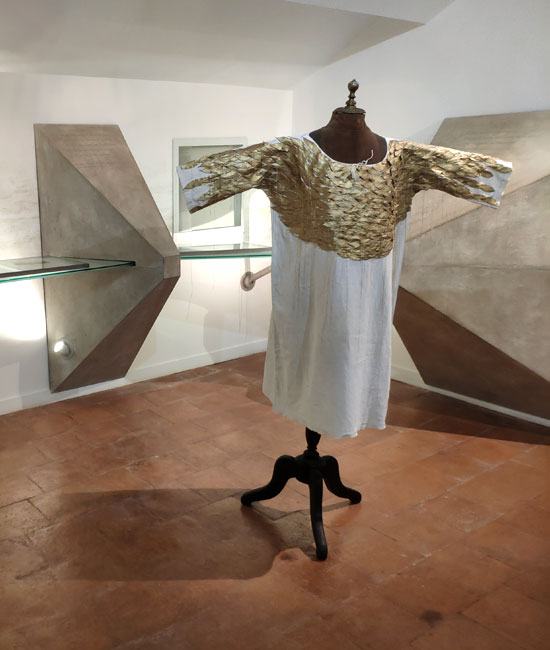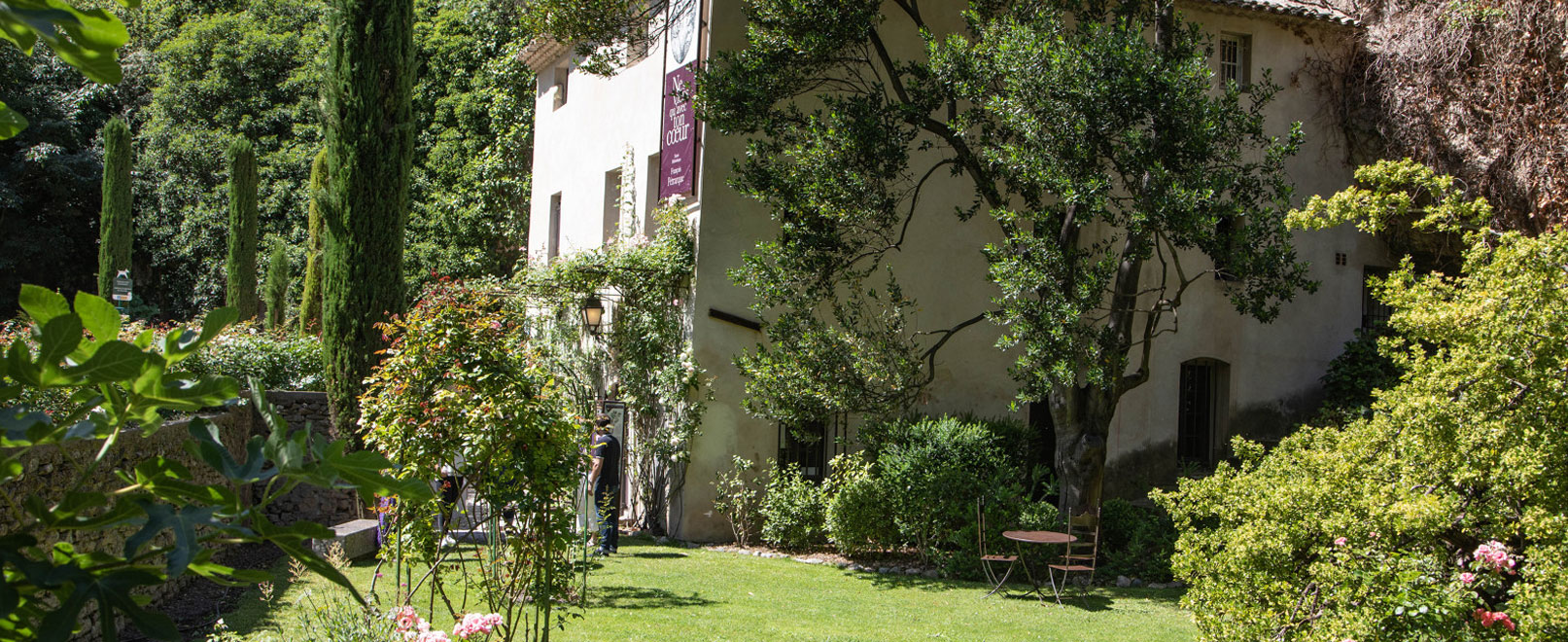
Petrarch Museum-Library
The eternal romantic poet
On the left bank of the river Sorgue, the pink building and its lush green garden leaves a lasting impression on all those who visit it. And with good reason, as it was here that the museum-library was created in 1927, filled with the works of Francesco Petrarca (anglicized as Petrarch), who was inspired by this romantic place. A certified “Musée de France”, the museum pays tribute to the Tuscan poet from the Middle Ages, who exalted his unhappy love for the woman he named “Laura” in the “Canzionere”, a masterpiece of 366 sonnets.
Duration:
2 hours
Price:
de 2€ to 5€
Type:
Visit
Parking :
paid
A haven of greenery, water, and roses
The property is accessed via a small tunnel: The Arca Petrarqua.
At the end of the tunnel, the garden and rose garden welcome you as you enter a lush green setting by the river Sorgue. On a hot summer’s day, the romantic atmosphere of this place is striking. Blue gems sparkling in the river bed, the sound of crystal clear water, miniature waterfalls in the shade of large trees, arches of white roses, and natural caves make up this sublime painting that invites daydreams or contemplation.
The ideal place for poetic souls! Here Petrarch found beauty, calmness and a world of muses that were reflected in his art.
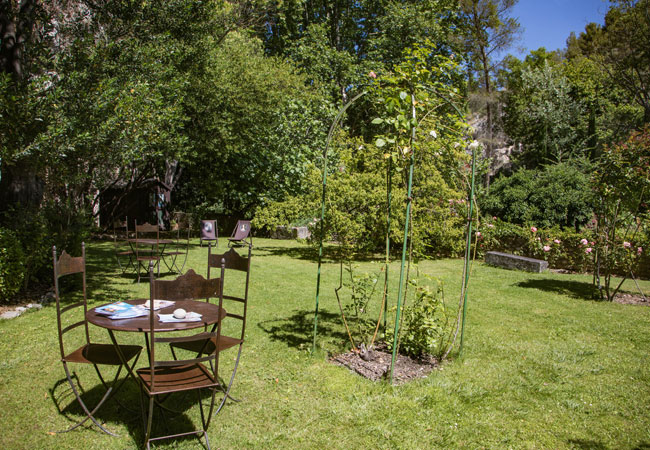

Worth Noting
In the near future, three new gardens (Italian, romantic, and medieval) will be created near this site as part of the Grand Site tourist project.


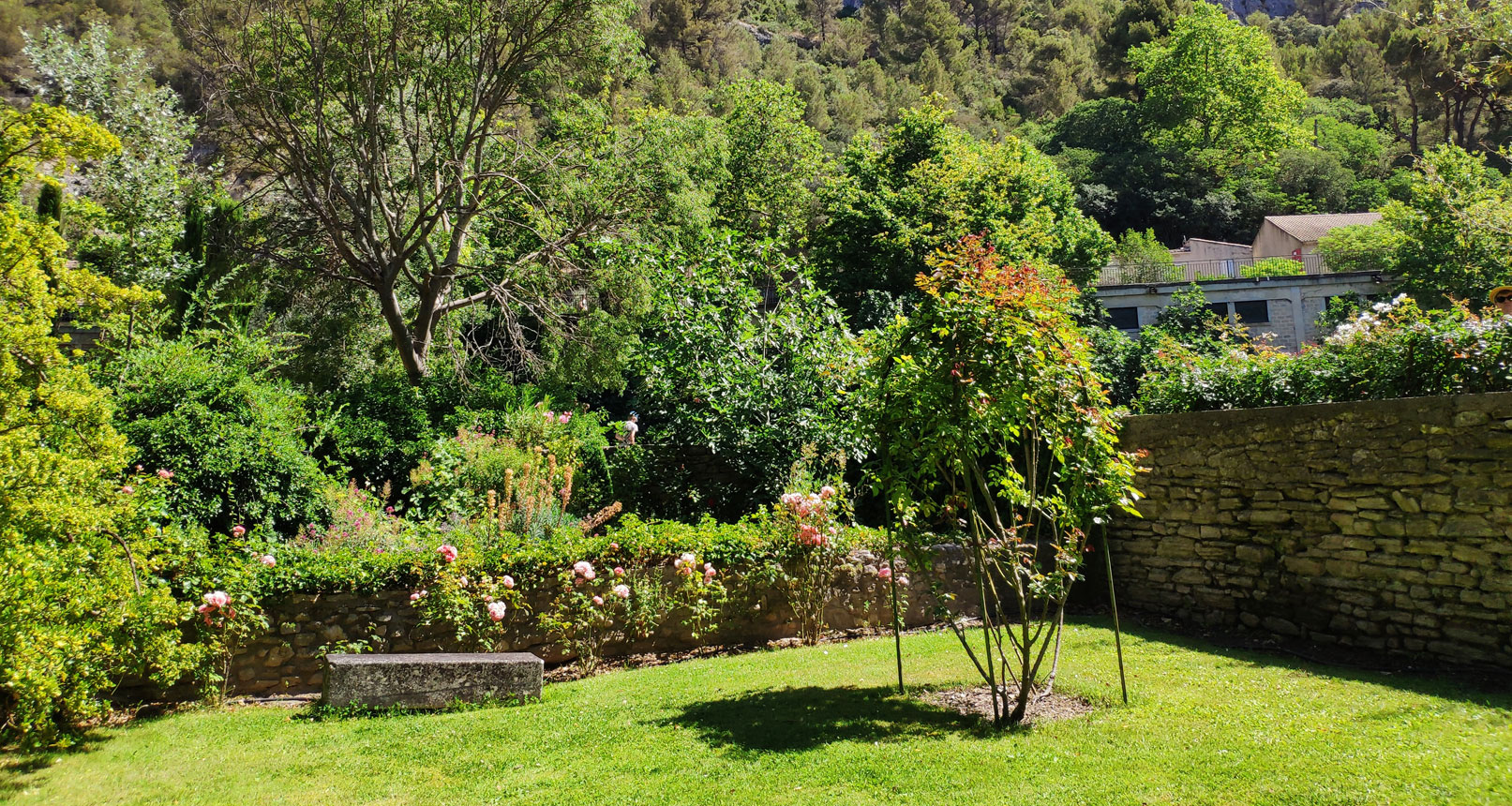
“The Other” and “The Self”
Impossible love
Petrarch arrived in Avignon in 1309, exiled from Italy with the rest of the culturally elite. This proliferation inspired him in the same way as the Troubadours. With grace and precision, our fascinating guide recounts the extraordinary story of the poet.
Petrarch met a woman in Avignon who left a lasting impression on him. Totally under the spell of this apparition, he wrote her a sonnet a day for 20 years. He named her Laura, and though she was never identified, she would haunt his poetry for the rest of his life. As her name was never revealed, this infatuation falls under the category of courtly love.
Laura is the perfect name as it refers to:
– The scared poetic laurels
– To “l’aura” with the meaning of inspiration
– To “l’or” (gold)

Did you know?
Petrarch is not only the father of Italian literature but also one of the first figures of the Renaissance.
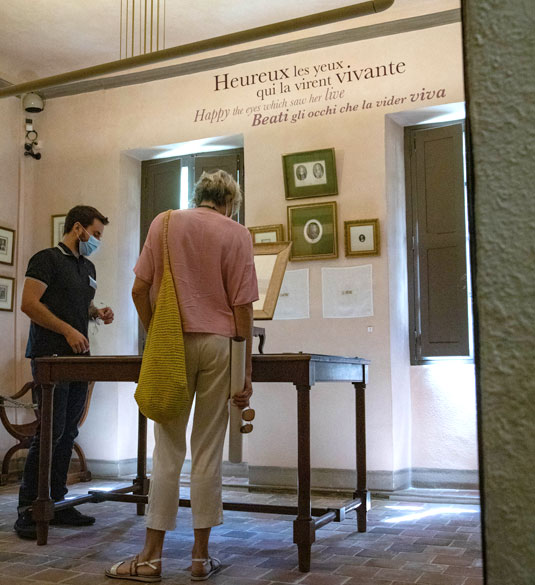


Vallis clausa or Vaucluse, the land of art and literature
The ground floor is dedicated to the contemporary poet from Vaucluse, René Char. At the heart of the collection are the works that he created in close collaboration with painters and sculptors such as André Giacometti, Pablo Picasso, Georges Braque, and Nicolas de Staël. These compositions are evidence of the complementary relationship between the author’s texts and the illustrations of his artist friends.
A temporary exhibition by Christine Ferrer about the pair and the work of Petrarch completes your journey through the museum.


Firm Favourite
C. Ferrer has also made creations with elements recovered from the famous Mathieu chandelier
